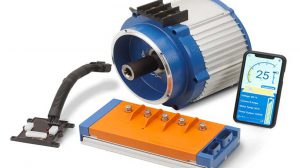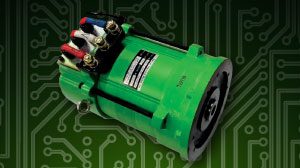QUESTION:
Should I use a voltage reducer or voltage converter?JD from Vermont
ANSWER:
First let’s define what each one is. A voltage reducer is a devise that reduces 16/18 volts to a usable 12-volts from the negative side. This is used with two 8-volt batteries. You will not see 12-volts at open circuit, you must have a load applied to see the 12-volts.
A voltage converter is a device that converts 36/48 volts to a usable 12-volts. The advantage to this system is you are using the entire battery pack not just two batteries.
Both use a typical output amperage rating of 17 to 25 amps depending on the size you buy. Both have a tremendous amount of heat that must be dissipated. A reducer has one negative wire in and one negative wire out. A converter has a positive wire in and a negative wire in. A converter has a negative wire out and a positive wire out. Some converters use a fifth wire for key switch activation.
Before installing either system clear the car of all grounds! Grounds are created from dirt and moisture on top of the batteries, motor brush dust, wiring grounds or some sort of accessory failure. Grounds on an electric car can destroy converters or reducers very quickly. Once you have cleared the car of grounds you can install the unit.
A reducer as I said is used on two batteries. The use of two batteries can create issues for heavy duty applications. Keep in mind this system is only designed for light duty applications such as finishing 18 holes of golf, it is dark and you need to see to get home. If used in a heavy application over discharging of those two batteries will occur. During the charge cycle they cannot catch up and over time they will fail. Also over discharged batteries beyond the 80% level will destroy a battery rather quickly.
Converters on the other hand draw current equally from the entire battery pack! This will allow better charging features and avoid that two battery catch up problem. This will allow for better run time of the car and greater cost savings in the long run. However, we must point out the disadvantages of a converter. One is, the out front cost as it tends to be a little higher. Two you must be clear of grounds on the car. There are converters that do resist the ground condition better than some. This is called an isolated ground system. You must pay attention to that when buying one. Isolated ground converters as I said do resist the car grounding much better. Most aftermarket converters are of the non isolated ground style. When ordering confirm what it is!
My rule of thumb is know your customer, know the application and know the product. Is the out front cost really that much? Consider the cost of two batteries compared to the initial cost of a voltage converter?
Note: know what current demand is, as that matters to the size of converter or reducer you use. Check the condition of the car, the batteries, and accessories being used. Make sure you have a good mounting surface for heat dissipation. Follow the wiring diagram provided with the product.
Headlights and taillights pull around 2.5 amps per bulb. So you are looking at a 10 amp load with just headlights and taillights alone. As you add other accessories add up the load and determine if two reducers or converters may be needed. Typically you can run a complete street ready car with one 17 amp with a 20 amp in-rush rating.











